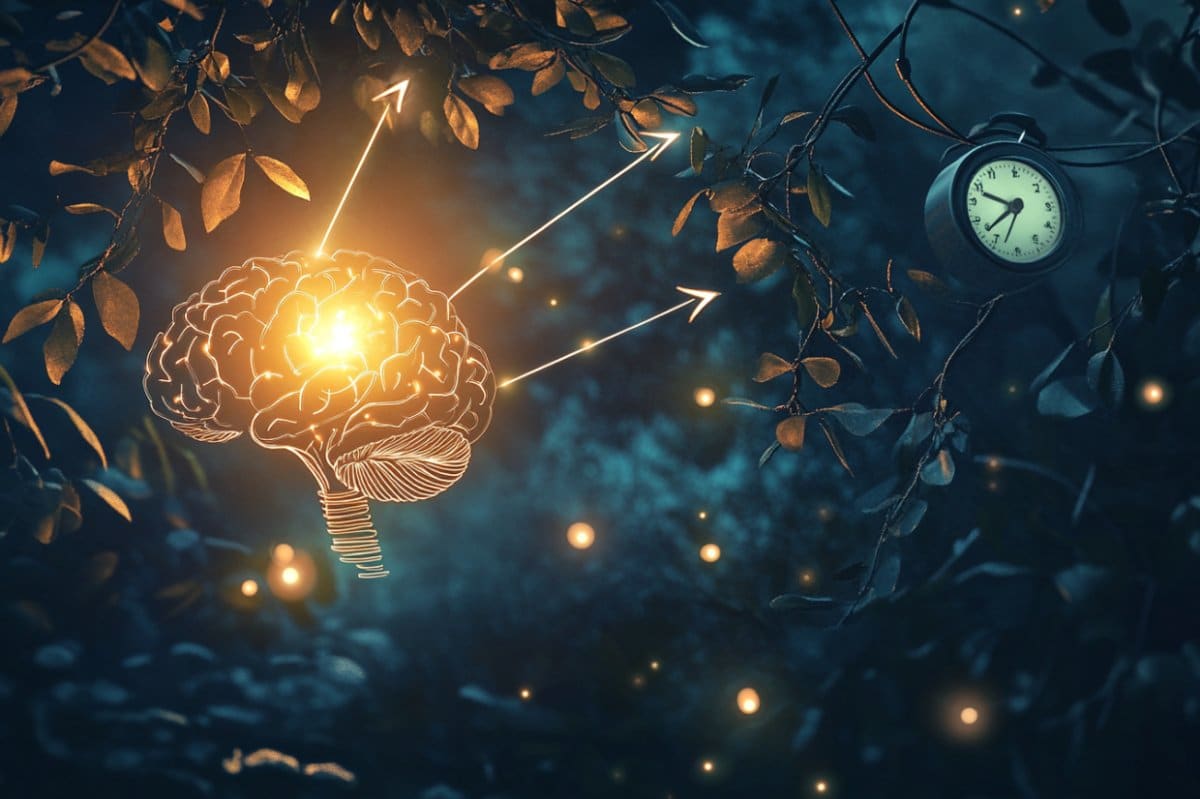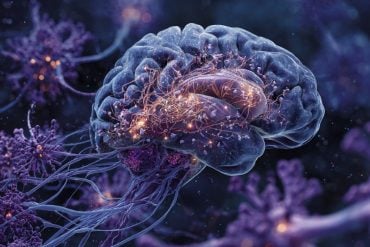Summary: Researchers studying the tiny roundworm C. elegans have uncovered a surprising mechanism by which a single brain signal controls both falling asleep and waking up. The chemical messenger FLP-11 activates a receptor called DMSR-1 in different neurons to either silence wakefulness or shut down sleep, acting as a biological on-off switch.
This dual function helps regulate not just sleep initiation but also its duration. The discovery could inform future research on sleep disorders like insomnia and narcolepsy in humans.
Key Facts:
- Single Molecule, Dual Role: FLP-11 both induces and ends sleep in C. elegans by acting on different neurons.
- Receptor Discovery: The receptor DMSR-1 is essential for interpreting FLP-11’s sleep commands.
- Broader Relevance: Though studied in worms, this mechanism may reveal conserved sleep pathways across species, including humans.
Source: TUD
People spend about a third of their life asleep. Yet, surprisingly little is known about how our brains control falling asleep and waking up.
Now, researchers led by Prof. Henrik Bringmann at the Biotechnology Center (BIOTEC) of TUD Dresden University of Technology discovered another piece of this puzzle. The team showed that a single brain signal acts like a biological switch – both triggering sleep and ending it.

Their findings, published in the journal Current Biology, were made possible by studying a tiny roundworm C. elegans, a powerful model organism in biology.
“It is really important to be able to fall asleep, but just as important to wake up too!,” says Prof. Bringmann, research group leader at BIOTEC who led the study.
“We know that falling asleep and waking up is controlled by a special set of brain cells, called sleep neurons. However, we don’t know how exactly they control the downstream molecular pathways to make us fall asleep and wake up again.”
The Bringmann group turned to C. elegans, a tiny roundworm to answer these questions. In contrast to humans, who have thousands of sleep neurons that control sleep, C. elegans needs just one neuron to do this job. This simplicity makes it a perfect model organism to study the principal molecular pathways controlling sleep.
This research sheds light on one of the fundamental questions in biology: how organisms regulate sleep and wakefulness. By understanding the fundamental molecular machinery behind sleep, researchers can better understand sleep disorders such as narcolepsy and insomnia that that have a major impact on quality of life.
The findings also add to the growing body of evidence that even simple model organisms can reveal fundamental mechanisms that govern life.
One Molecule, Two Jobs
The team focused on a chemical messenger called FLP-11. When a sleep neuron activates, it releases FLP-11. Such chemical messengers work like molecular “notes” that are passed between brain cells to deliver different commands.
“We knew that FLP-11 is essential to sleep but we didn’t know what message it delivers and to whom,” explains Prof. Bringmann.
Through genetic screening, the researchers identified a key receptor, called DMSR-1, that FLP-11 binds to deliver its message. If this receptor was missing from the brain, researchers observed that the worms slept significantly less. DMSR-1 turned out to be present in different types of neurons.
Depending on which neuron received the message, the results were dramatically different.
“We discovered that FLP-11 activates DMSR-1 receptors in two completely different types of neurons,” says Lorenzo Rossi, a PhD student who conducted the experiments in the lab of Prof. Bringmann.
“We found the receptor present in neurons that promote wakefulness. When activated by FLP-11, the receptor turns off the wakefulness neurons.
“This, in turn, helps the worm fall asleep. On the other hand, the receptor is also present in the sleep neuron itself. Here, it also turns it off, which ultimately wakes the animal back up,” explains Lorenzo Rossi.
In other words, the same chemical that puts the worm to sleep also helps wake it up again, simply by targeting different cells in the brain.
“It is an efficient mechanism that controls the start of sleep while also keeping its duration in check,” adds Prof. Bringmann.
A Universal Principle?
“Unlike humans, C. elegans have much shorter sleep phases that last only around 20 minutes. However, sleep is such a fundamental biological process that many molecules and mechanisms involved in sleep are shared across species,” says Prof. Bringmann.
“We don’t yet know if the same sleep switch exists in humans, but it provides a promising clue in the search for mechanisms that control sleep in our species.”
About this sleep and neuroscience research news
Author: Magdalena Gonciarz
Source: TUD
Contact: Magdalena Gonciarz – TUD
Image: The image is credited to Neuroscience News
Original Research: Open access.
“The neuropeptide FLP-11 induces and self-inhibits sleep through the receptor DMSR-1 in Caenorhabditis elegans” by Henrik Bringmann et al. Current Biology
Abstract
The neuropeptide FLP-11 induces and self-inhibits sleep through the receptor DMSR-1 in Caenorhabditis elegans
Sleep is caused by the depolarization of sleep-active neurons, which secrete gamma-aminobutyric acid (GABA) and neuropeptides such as conserved RFamide (c-terminal Arg-Phe-NH2 motif) neuropeptides to dictate when an organism falls asleep and when it wakes up.
However, the mechanisms by which neurotransmission from sleep-active neurons induces sleep and determines the duration of sleep remain poorly understood. Sleep in Caenorhabditis elegans crucially requires the single sleep-active RIS neuron, which induces sleep via the release of FLP-11 RFamide neuropeptides.
However, how RIS and FLP-11 control sleep is not well understood, as the receptor through which FLP-11 acts has yet to be identified. In this study, we discovered that RIS and FLP-11 control sleep through the Gi/o-protein coupled receptor DroMyoSuppressin receptor related 1 (DMSR-1).
Using cell-specific knockdowns, we demonstrate that dmsr-1 induces sleep by acting in cholinergic neurons downstream of RIS activation. Pharmacological intervention indicates that inhibiting cholinergic signaling is necessary for sleep.
Consistently, DMSR-1 expression in cholinergic neurons is essential for core sleep functions, including protective gene expression and survival. In contrast, we found that dmsr-1 in RIS mediates negative feedback control during sleep that limits RIS calcium activation and the duration of sleep. Consequently, dmsr-1 in RIS inhibits protective gene expression and survival.
Thus, DMSR-1 controls both the initiation and limitation of sleep, effectively coupling sleep induction with a sleep-stop signal.
RFamide neuropeptide-GPCR signaling might underlie similar dual mechanisms of sleep control in other species, and self-inhibition of sleep-active neurons might represent a conserved mechanism for limiting the duration of sleep.






